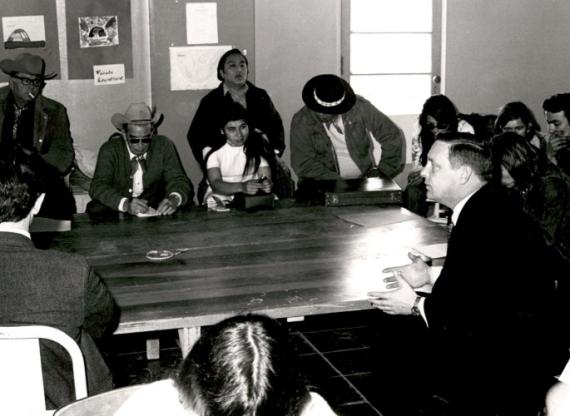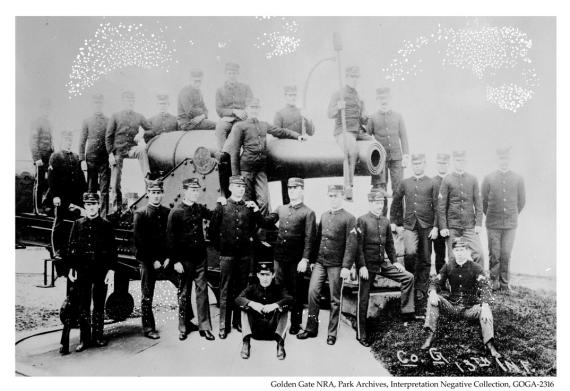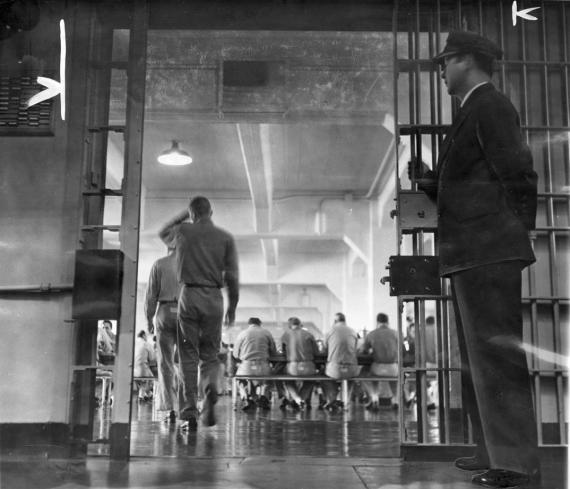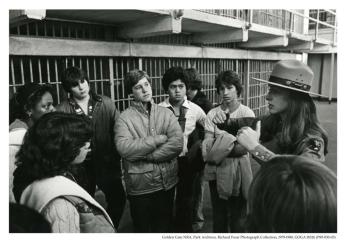The Captivating History of Alcatraz Island: From Military Fort to National Historic Landmark
By Javier Fernandez
Overlooking the San Francisco Bay, Alcatraz Island has captured the public’s imagination for generations, often serving as the setting for books and movies. Better known for its past as a federal prison, housing the nation’s most notorious criminals and troublesome inmates, Alcatraz Island has a rich history which also includes its function as a military fort, the site of a civil protest occupation, a GSA managed asset and a National Historic Landmark.
Located 1.25 miles offshore from the city of San Francisco, Alcatraz Island received its name from Spanish naval officer Juan Manuel de Ayala y Aranza in 1775 while charting the San Francisco Bay. Ayala named the island using a now archaic Spanish word for pelicans which translates to “La Isla de los Alcatraces” or “The Island of the Pelicans”. Control of the island shifted to Mexico following the country’s successful war of independence against Spain in 1821, and lastly to the U.S. following the signing of the Treaty of Guadalupe Hidalgo in 1848.
Fort Alcatraz
Following the Mexican-American War, President Milliard Fillmore recognized the island’s strategic military value and ordered Alcatraz Island to be set aside as a military reservation. Construction of Fort Alcatraz was completed in 1858.
By the early 1860s, Fort Alcatraz was housing confederate prisoners of war as well as private citizens accused of treason or being confederate sympathizers after the suspension of habeas corpus. The number of prisoners in Fort Alcatraz climbed steadily through the Civil War and additional cells were constructed as the island facility transitioned into a long-term military prison in 1868.
Military Prison
Alcatraz Island’s geographic location in the middle of San Francisco Bay made it uniquely suited to serve as a prison. The bay’s strong sea currents and frigid waters would prove deadly for escapees. After the end of the Civil War, the prisoner demographics grew to include Native American prisoners from the Indian Wars.
Development and construction on the island would continue through the 1880s to accommodate a growing prisoner population that had ballooned to over 450 during the Spanish-American War. The prison cells’ wooden construction was vulnerable to fires and after multiple incidents, they were replaced by longer-lasting and less vulnerable concrete structures; a trend which continued through the 1930s.
The prison was not seriously impacted by the 1906 earthquake which ravaged the city. Alcatraz temporarily housed prisoners from the city whose quarters were destroyed by the quake. It was also around this time that the island’s military defense operations ceased completely and shifted entirely to operational functions as a U.S. military prison. Between 1910 and 1912, the prison was entirely rebuilt in concrete by prisoners at a cost of $250,000. The new prison was renamed as “the Pacific Branch, U.S. Disciplinary Barracks for the U.S. Army” or more popularly known as “The Rock” by those who worked or were incarcerated there.
Federal Penitentiary
In 1933, the U.S. War Department determined that the Alcatraz military prison was no longer needed for defense purposes and transferred the facility to the Federal Bureau of Prisons the following year. In August 1934, the island prison was modernized and fortified, leading prison officials to declare Alcatraz America’s strongest prison and the ideal place to house the nation’s most ruthless and notorious criminals. Bank robbers, kidnappers, mobsters and murderers including Al Capone, Robert Franklin Stroud, better known as “the Birdman of Alcatraz”, and George “Machinegun” Kelly all served time on the island.
In total, 36 prisoners attempted to escape the island prison; 23 were captured alive, six were shot dead, two drowned, and five were officially listed as “missing and presumed drowned”. In 1962, the only successful escape occurred when John Paul Scott succeeded in swimming to the shore. He was quickly apprehended when four teenagers found the fugitive unconscious and hypothermic at Fort Point beneath the Golden Gate Bridge.
By the late 1950s, the high operational and maintenance costs of running the island prison were making the Bureau of Prisons question the long term viability of Alcatraz Federal Penitentiary. A 1959 report stated that Alcatraz cost three times as much to operate than a comparable prison; it cost $10 per prisoner per day compared to $3 in other prisons. Continuous exposure to salt spray contributed heavily to the prison’s structural deterioration and engineers determined it would cost $5 million to repair the damage. Ultimately, these underlying costs led to the closure of Alcatraz on March 21, 1963.
GSA’s Role and Native American Occupation

The Department of Justice declared Alcatraz Island to be excess federal property on April 12, 1963, and a presidential committee was formed to determine the island’s future use. At a March 1964 meeting, five Sioux Indians filed a claim for Alcatraz citing the right of tribes to claim excess government lands in a hope to transform the former prison into a university focused on Native American Studies and an American Indian Museum.
Later that month, the U.S. Attorney dismissed the group’s claim as being without foundation and GSA assumed custody of Alcatraz Island in July 1964. Following the City of San Francisco’s stated interest in turning Alcatraz Island into a recreational park site, GSA issued the Department of Interior a December 1969 deadline to explore the site as a federal recreation area.
A group of Native American activists, composed mainly of college students, occupied Alcatraz island on November 20, 1969. The group, who called themselves the “United Indians of All Tribes”, rejected orders to leave Alcatraz Island.
Upon learning of the activists occupying Alcatraz, GSA Region 9 Regional Administrator Thomas Hannon traveled to the island to initiate “peaceable” talks with the activist group. The aim was to find an “amicable solution” and reassure the group that there would be no forceful confrontation. Regional Administrator Hannon’s involvement with the activists came to an end when then President Nixon tapped Leonard Garment, special advisor to the president for minority affairs, and his assistant to take over negotiations.
By Christmas 1969, approximately 200 Native Americans occupied Alcatraz Island. The group suffered numerous mishaps including the tragic death of the group leader’s 13-year-old daughter and an accidental fire that destroyed numerous buildings, including the warden’s home, lighthouse keepers’ house, and Coast Guard quarters. Nineteen grueling months of struggles took its toll, and slowly activist occupiers began to desert the island. On June 11, 1971, federal agents landed on Alcatraz Island and removed the last 15 people remaining.
While the occupation proved unsuccessful, many historians now view their efforts as a watershed moment for Native American activism. The effort led the U.S. government to deed hundreds of acres of federal land in Yolo County to Native Americans, and Mexican Americans founded Deganawidah-Quetzalcoatl University in 1971.
National Historic Landmark
In 1972, President Richard Nixon signed legislation to establish the Golden Gate National Recreation Area, allocating $120 million for the
acquisition and development of the land. GSA facilitated the transfer of Alcatraz Island and Fort Mason from the U.S. Army to the National Park Service. Alcatraz Island was listed in the National Register of Historic Places in 1976 and declared a National Historic Landmark in 1986.
Today, Alcatraz Island ranks as one of the National Park Service’s most popular tourist attractions with over 1.4 million visitors annually. As we celebrate National Historic Preservation Month, we can appreciate that Alcatraz remains accessible to the public and will continue to be accessible to future generations.

 U.S. General Services Administration
U.S. General Services Administration


